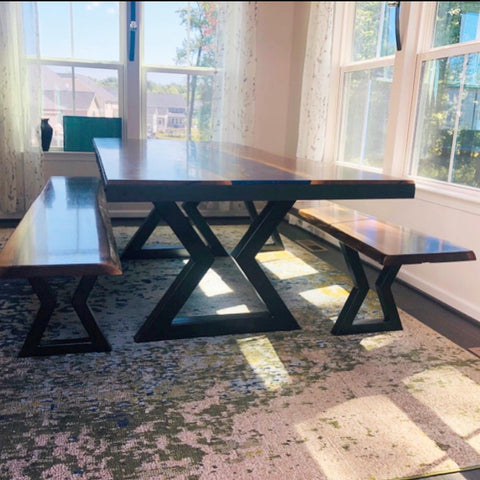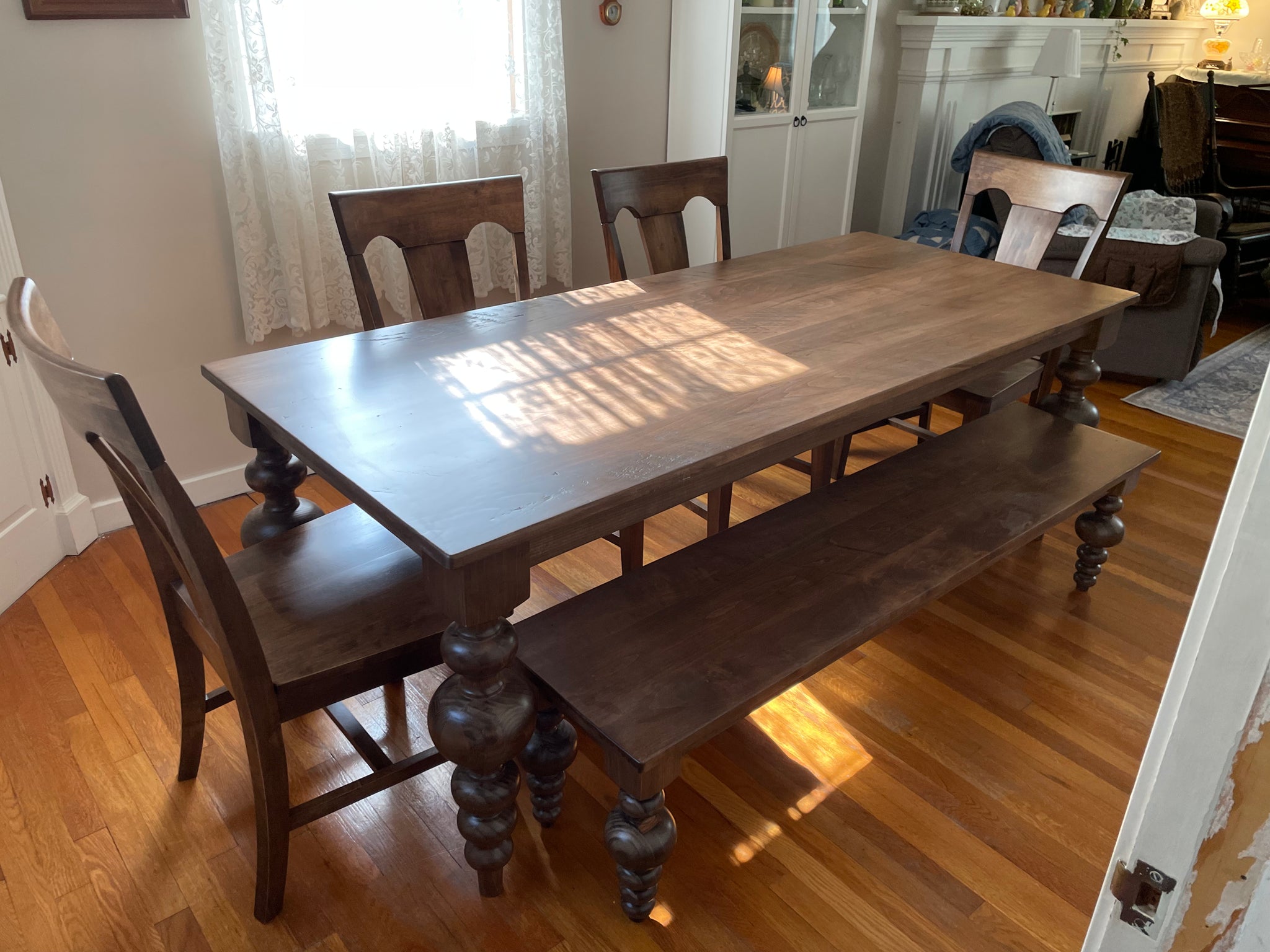Exactly How to Choose the Perfect Dining-room Table Legs for Your Home Design
Choosing the excellent dining space table legs is a nuanced procedure that requires mindful factor to consider of numerous components, including your area constraints, aesthetic preferences, and sensible requirements. The interaction in between designs, products, and measurements can dramatically affect the setting of your dining location, making it vital to approach this choice systematically.
Assess Your Eating Room
Analyzing your eating room is crucial for selecting the right table legs that match both looks and capability. Begin by determining the dimensions of your eating location, consisting of ceiling elevation, flooring room, and closeness to various other furnishings. This information will assist determine the suitable dimension and height of your table, which directly influences the choice of table legs.
Following, take into consideration the design and layout of your eating area. An open-concept layout might profit from table legs that supply aesthetic lightness, such as slim metal or acrylic choices. On the other hand, a more traditional setting may require strong wood legs that give a feeling of permanence.
Review the existing color palette and materials in your eating location. Balancing the table legs with these components produces a natural look that enhances the general decor. In addition, consider the functionality called for in your room. As an example, if you regularly organize huge gatherings, think about legs that give added assistance and stability.
Inevitably, a comprehensive evaluation of your dining area will certainly direct you in making a notified decision, ensuring that your table legs not just enhance the aesthetic charm but likewise serve sensible purposes.
Consider Your Style Preferences
When choosing dining room table legs, it is necessary to mirror on your individual design preferences, as they considerably influence the total aesthetic of your dining room. Your choice of table legs can either enhance or contrast with existing design, making it important to straighten them with your preferred interior decoration style.
If your home leans towards a contemporary aesthetic, consider smooth metal or minimal wooden legs that provide a clean, clean appearance. For an extra conventional method, luxuriant wooden legs with elaborate carvings can add a touch of elegance and refinement. Industrial styles take advantage of durable, basic materials such as recovered timber and metal combinations, reflecting a sturdy appeal.
Additionally, farmhouse and rustic designs often favor sturdy, chunky legs that evoke a sense of warmth and comfort. Alternatively, if your design is diverse, you could choose unique shapes or a mix of materials to develop aesthetic interest.

Evaluate Material Options
The selection of material for eating space table legs plays a crucial role in both toughness and aesthetic allure. Typical materials include timber, steel, and composite choices, each offering distinct qualities that can affect the total appearance and durability of your table.
Timber is a timeless option, recognized for its warmth and adaptability. Hardwoods like oak and walnut give phenomenal strength and can be completed in various discolorations to match any kind of design. Softwoods like ache are more prone to scrapes and damages, making them much less ideal for high-traffic locations.
Steel legs, commonly crafted from steel or aluminum, radiate modernity and commercial appeal. They are very durable and immune to put on, making them suitable for households with youngsters or constant events (dining room table legs). Additionally, metal can be finished in different shades, enhancing the customization opportunities
Composite materials, such as MDF or laminate, deal cost and diverse designs. While commonly less long lasting than strong timber or steel, they can still offer a trendy appearance and are typically very easy to maintain.
Eventually, the product you choose need to line up with your way of living, aesthetic preferences, and the degree of usage your eating table will experience.
Determine Elevation and Size
Picking the proper height and dimension for your eating space table is necessary for both functionality and convenience. The common elevation for dining tables usually varies from 28 click here to read to 30 inches, enabling enough legroom for a lot of individuals when seated. It is essential to think about the dimensions of your eating area and the kinds of chairs you plan to utilize.

In addition, consider the proportions of your dining-room. A bigger table in a large area can create a grand ambiance, while a smaller table works well in more intimate setups. Ultimately, the right elevation and size will certainly harmonize with your general design and improve the eating experience for you and your guests.
Explore Customization Possibilities

Furthermore, the layout of the legs can be tailored to fit numerous designs, such as rustic, modern, or industrial. For circumstances, tapered legs can evoke a mid-century modern-day feeling, while beefy, block-style legs may reverberate with conventional or farmhouse design.
House owners can additionally explore color surfaces, from all-natural timber spots to paint, allowing them to match or contrast with the table top and surrounding decoration.
Additionally, leg elevation can be readjusted to suit particular seating arrangements or individual preferences, enhancing both comfort and functionality.
Lastly, unique decorations, such as carvings or decorative braces, can additionally individualize the table legs, making the dining experience not just a meal yet a statement item in the home. By considering these modification alternatives, homeowners can produce a dining-room table that absolutely shows their uniqueness.
Conclusion
Picking the optimal dining area table legs needs careful consideration of different variables, consisting of the dimensions of the eating room, design preferences, material durability, and desired elevation. Personalization choices better improve the capability to accomplish a cohesive visual that enhances the general view publisher site decor. By methodically reviewing these components, property owners can ensure that the picked table legs not just meet useful needs but likewise add favorably to the eating experience and setting of the home.
Selecting the optimal dining space table legs is a nuanced process that calls for cautious factor to consider of different elements, including your area restrictions, visual choices, and useful needs.Examining check out this site your eating area is important for picking the right table legs that match both aesthetics and functionality.When establishing dimension, determine the area where the table will certainly be positioned to ensure it fits conveniently, allowing for at the very least 36 inches of clearance around the table for simple movement. A larger table in a sizable area can develop a grand ambiance, while a smaller table functions well in more intimate settings.Choosing the excellent dining room table legs requires careful consideration of numerous elements, including the measurements of the dining space, style choices, material toughness, and wanted elevation.